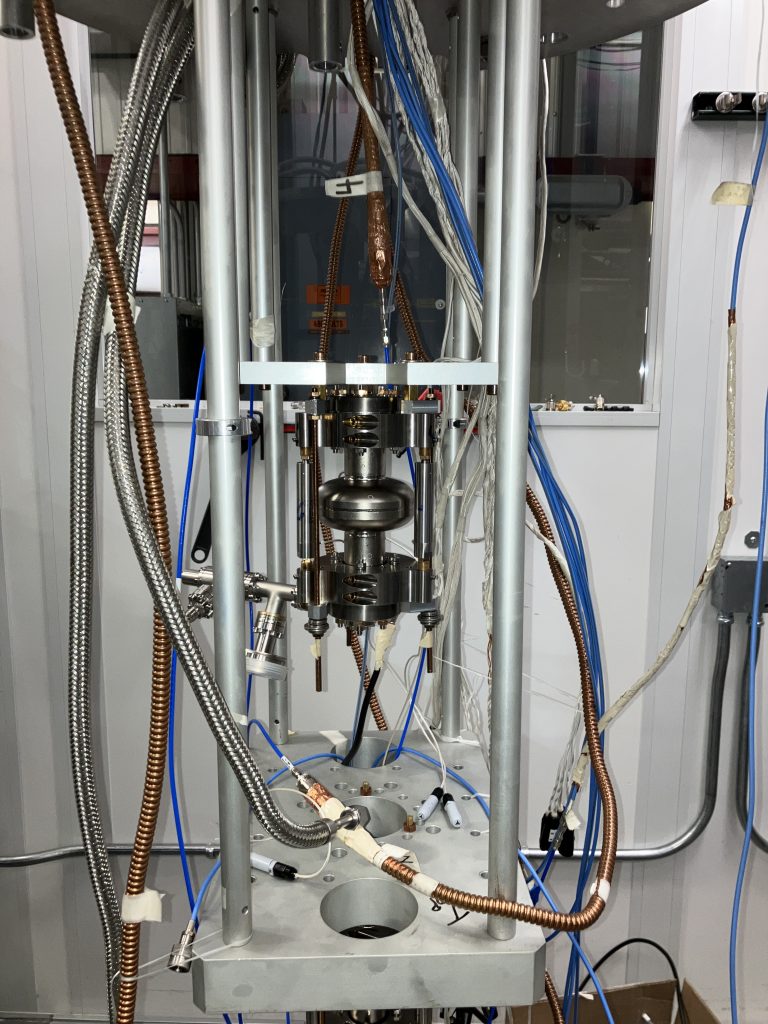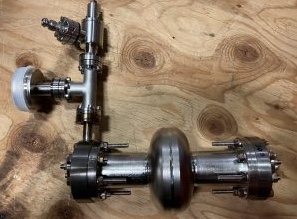Doubling Photon Lifetime by Interconnecting Superconducting Radiofrequency (SRF) Cavities
The Science:
SQMS researchers have achieved control over the photon lifetime of two interconnected SRF cavities. By manipulating the phase on a coaxial cable, it is possible to double the coherence time.
The Impact:
This improvement paves the way for advanced quantum state transfer and computing between two interconnected quantum devices. Without material or fabrication improvements, it is possible to enhance the coherence time and mitigate energy losses. This approach can be exploited to protect qubit coherence and improve qubit readout speed for advanced quantum state transfer and computing.



Summary:
Three-dimensional superconducting cavities with high-quality factors have extensive applications in high-energy physics, quantum information science, and sensing. Here, we study the photon lifetime of two interconnected superconducting cavities coupled by a coaxial cable with a tunable phase parameter. We find that both the phase accumulation on the cable and the phases of initial states affect the lifetime of photons in each cavity due to the interference between cavity fields. Our experimental study via ring-down measurement at a cryogenic condition observed a factor of two enhancement of cavity photon lifetime by optimizing the resonance frequency matching and the phase parameter. We envision that the coupled superconducting cavities can be exploited for enhancing the performance of three-dimensional quantum memory and quantum information processors.
Contact:
Changqing Wang – cqwang@fnal.gov
Focus Area:
Devices Integration, Prototypes and QPUs
Institution:
Fermi National Accelerator Laboratory
Citation:
Wang, Changqing, et al. ” Phase-controlled improvement of photon lifetime in coupled superconducting cavities.” Phys. Rev. Applied 21, 024040 https://doi.org/10.1103/PhysRevApplied.21.024040
Funding Acknowledgement:
This material is based upon work supported by the U.S. Department of Energy, Office of Science, National Quantum Information Science Research Centers, Superconducting Quantum Materials and Systems Center (SQMS)
